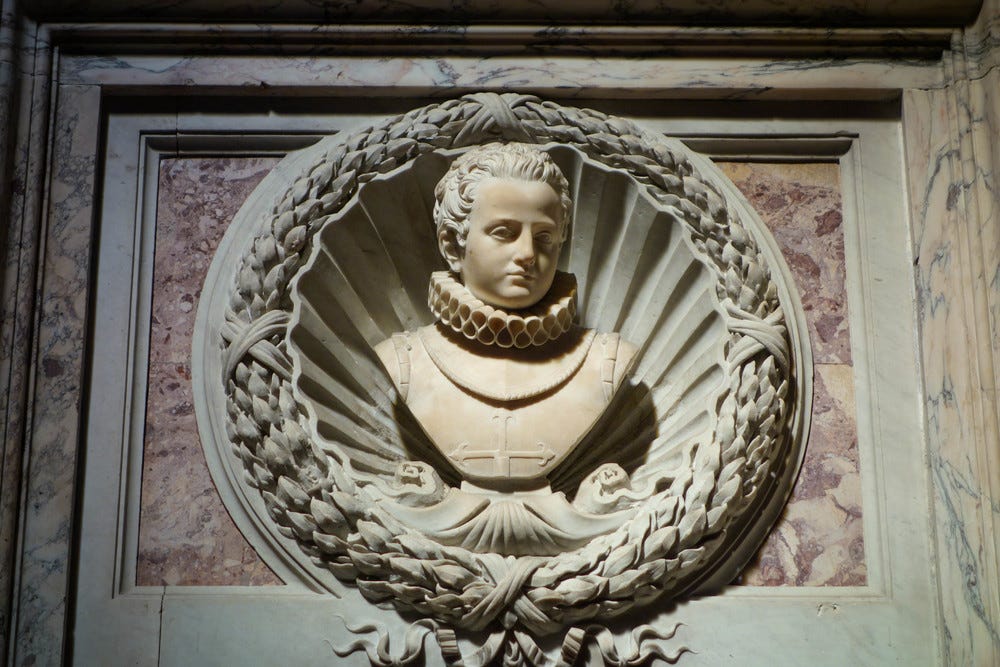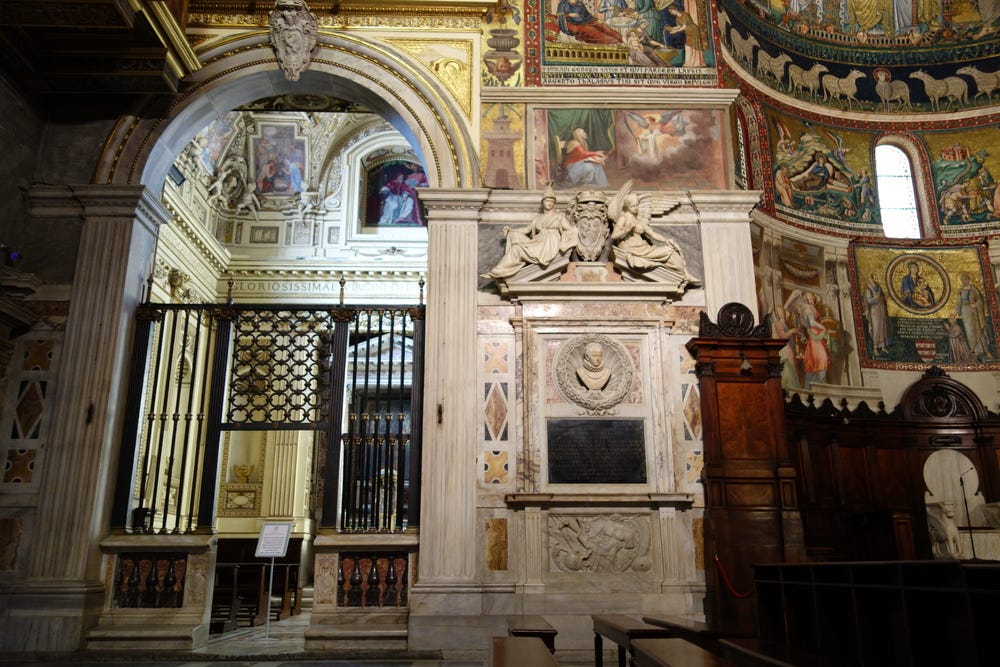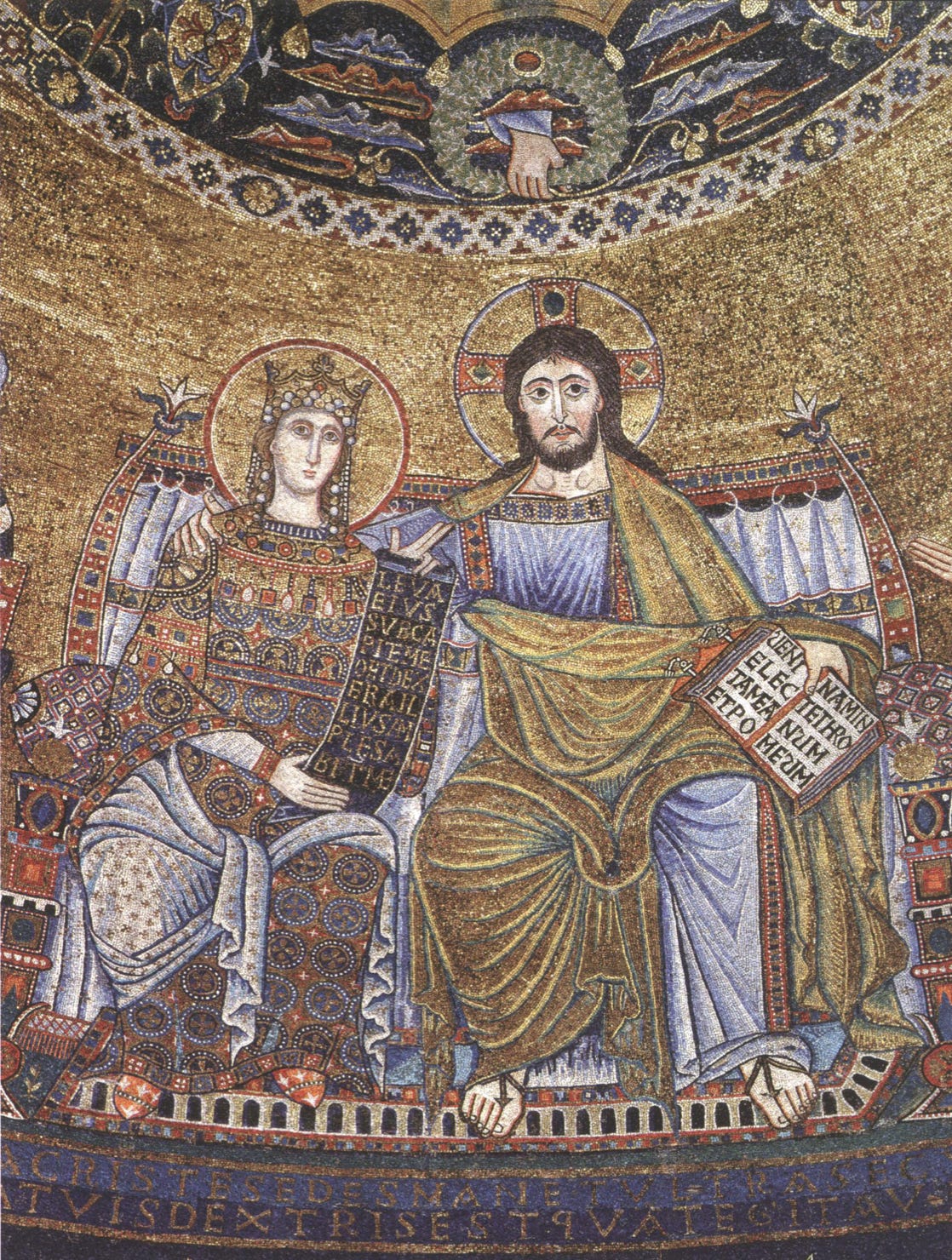In the bowels of a Roman Basilica, all of time collapses into coral-colored eternity. Echoes of profane history and historical blood feuds can be traced out in unassuming nooks, all under the sublime visions of eschatological finality and sacred scenes immortalized in apse mosaics and frescoes. A Roman Basilica is both a place of worship and yet also a puzzle- a maze of symbols and iconography- a chamber of incense and awe. All of time unfolds and seems to present itself before the observer in those temples of God.
I have spent incalculable hours of my life admiring these timeless spectacles, meditating upon their treasures and the sacred scenes that find expression within them. But the Basilica I have spent the most time in would have to be Santa Maria in Trastevere. Today I will invite you to admire her with me.
This will be a follow-up to a previous article I did on the Church that I will link below.
Read that first.
____________________________
Where to start? Your guess is as good as mine. There is no clear-cut way to begin such an investigation. Chronologically? Thats tedious. Instead, we are just going to begin wherever I want. It is my substonk after all. So let’s begin with something vulgar.
Inside a basilica, you can find little clues, little historical fingerprints of great stories and shocking crimes. If you have the eyes to see that is. So before we grasp the beautiful, let us examine the morbid- or at very least the profane. For better or for worse, great works of art are engendered by a patron with a purse. Patrons tend to be of the nobility, and noble families clash with other noble families. Inside a Basilica, we can find traces of these feuds.
Just to the left of the high altar, is a funerary monument for Roberto Altempts.
The bust bears all the features of nobility, with a knightly tabard, flowing locks, and a piercing gaze of youthful splendor. For such a dashing fellow to be interred adjacent to this sacred vision of Christ enthroned, he must have been a man of chivalric virtue. An understandable assumption, but one that could not be further from the truth. At the ripe age of 20, this nobleman was executed for rape.
In the Cinquecento, such a punishment was unthinkable for someone of his noble heredity. The irony is that his “harsh” punishment was not due to the brutal nature of his crime, but due to the identity of his wife. Roberto was married to an Orsini, and the Orsini were at odds with the Pontiff of the time, Sixtus V. And so Pope Sixtus decided to bring down the full weight of the law upon his neck. The monument’s Latin epitaph reads “extinguished too soon.” How could a pious pilgrim not assume the best?
The rapist’s position here can best be explained by his family chapel to the left of him.
And here we have a perfect segue to examine the Altempts Chapel. The chapel was commissioned by Cardinal Marco Sittich von Altemps and completed in 1587. The Chapel’s primary focus artistically is a memorialization of the Council of Trent. Why this particular scene? Marco’s uncle Pope Pius IV presided over the conclusion of the Council. Here we have a prime example of how the nobility depicted specific scenes of a religious context to add glory to their own family name.
Pius IV’s insignia can be seen in the left corner- the Medici “Cinque Palle,” however, Pius made it very clear that he was of the Milanese branch. But what is truly fascinating about this fresco is the scene occurring in the right of the foreground. I have heard various interpretations, but it seems that this allegory of religion triumphing is playing with imagery of the Pope Joan legend. Fascinating.
Here is the chapel ceiling.
Very Marian, very breathtaking.
But the crowning jewel of the Altempts Chapel is an artistic treasure far older than anything else in the chamber. La Madonna della Clemenza, an icon that some experts claim dates back to the 6th century, making it one of the oldest Marian icons in existence.
I will actually quote a description of it found in the Churches of Rome wiki as it does it true justice.
Incredible. But the true marvel of the Basilica as a whole is the apse mosaics.
___________________
Ironically, the sublime vistas that reflect within the conch of the apse were only created because of a profane feud. Let us start in the beginning. Around the period of the Gregorian reforms, the basilica began to attract increased attention and patronage. In the early 12th century, Pope Callixtus II decided to transfer to SMT the Station of the Circumcision, the Octave of Christmas. The liturgical celebration was transferred here in part due to its longstanding association with the Christ Child, because of the Fons Olei miracle that I discussed in the previous article. The bringing of this celebration to Trastevere delighted the inhabitants, as it implied an increase in spending and patronage within the parish. Much of this activity was sponsored by the wealthy merchant Petrus Leonus, who owned Tiber Island and therefore controlled one of the routes from St Peters to SMT. Due to this alliance of Callixtus and Leonus, the Basilica fell into the hands of Leonus’ son, a cardinal named Pietro Pierlioni, when he was elevated to the Papacy in 1130. However, on the day of election, two men were both chosen. Gregorio Papareschi, or Pope Innocent II, and Pierlioni, who took the name Analectus II. During the aftermath of the election, Anacletus had more support, and so Innocent II had to flee the city. But after 8 years Innocent II had found favor with the Holy Roman Emperor, and the dying Anacletus was ruled an anti-pope. Innocent II was from another Trastevere family that were staunch rivals of Anacletus’, and he also had property around SMT. Out of sheer spite, he had the entire structure razed to the ground as the ultimate insult towards his rivals, and completely rebuilt it. And during this renovation project, the most beautiful mosaics of the era took form upon the apse. Providence has many tools at His disposal, and petty rivalries can be fertile soil for crafting celestial visions.












